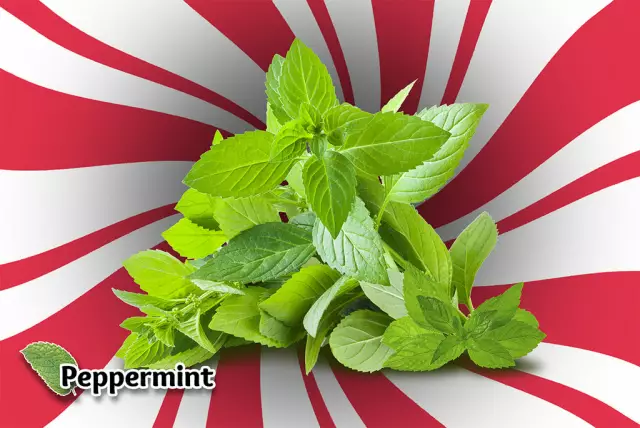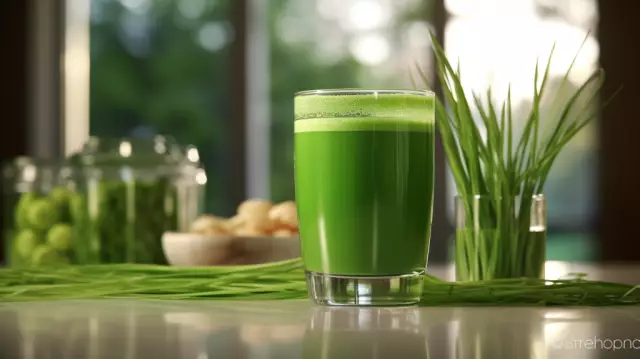- Author Rachel Wainwright [email protected].
- Public 2023-12-15 07:39.
- Last modified 2025-11-02 20:14.
Mistletoe
Instructions for use:
- 1. Description and distribution locations
- 2. Areas of application
- 3. Chemical composition
- 4. Treatment
- 5. Contraindications to use

Mistletoe is a perennial parasitic plant belonging to the Santalov family.
Description and distribution locations
The plant has thin twigs with narrow paired leaves and yellowish-white berries. The plant grows into spherical bushes, settling high in the branches of old trees. The plant receives nutrients and moisture from the host tree, launching its roots deep under its bark. Prefers apple trees, but you can also see it on other trees with soft bark: linden, hawthorn, chestnut, poplar, oak, birch, and sometimes on some conifers. The plant is especially noticeable in winter, when leaves fly from the trees. The plant blooms in late winter.
White mistletoe is found in the Baltics, Central Europe, Belarus, Ukraine, southern Russia, East and Asia Minor, and the Caucasus.
In Northern and Eastern Europe, colored mistletoe is widespread, very similar to white mistletoe, only its berries are yellow-orange. Each berry of the plant contains only one seed.
Applications for mistletoe
In ancient times, the branches of a plant were considered a talisman. Men carried them with them, considering them a symbol of protection, and women believed that the plant could help them conceive a child.
Currently, mistletoe has found its application as a medicinal plant and in the chemical industry.
Mistletoe berries are used to make glue used to control flies and various pests of fruit species.
Chemical composition
The greens and branches of the plant contain alcohols (pinite, ceryl alcohol, quebrachite, etc.), carbohydrates, saponin-containing and bitter substances, fatty acids, organic acids, flavonoids, tannins, resins, amino acids, ursular and oleanolic acids, acetylcholine, viscotoxin, ascorbic acid, choline, viscerin, B-viscol, a-viscol, beta-carotene, macro- and microelements and many other active compounds.
Mistletoe treatment
Found widespread use of mistletoe in official medicine. The shoots and leaves of the plant have astringent, analgesic, wound healing, diuretic, anthelmintic, anti-inflammatory effects. Treatment with mistletoe is carried out with pulmonary, uterine, gastrointestinal and nosebleeds, as well as early menopause. Treatment with mistletoe is successfully carried out for kidney disease, arthritis, rheumatism, intestinal atony, neuralgia, hypertension, osteochondrosis, atherosclerosis, angina pectoris and a number of other diseases.
Mistletoe decoction and tincture have a calming effect. Mistletoe tincture is prescribed for hysteria, epilepsy, hyperexcitability, convulsions and diseases of the nervous system. They drink mistletoe tincture and decoction with dizziness, loss of strength and in old age, as well as with inflammation of the lymph nodes.

Water mistletoe decoction has an anthelmintic effect. They drink it for headaches, diarrhea, asthma, tuberculosis, hypertension, painful menstruation, rheumatism and diseases of the cardiovascular system.
Tincture of mistletoe cut from birch is an excellent blood-purifier, and plant cut from pine or oak is used in the treatment of pulmonary tuberculosis, bronchial asthma and heart disease.
For gout, rheumatism, swelling of the lymph nodes, abscesses and cancerous tumors, make lotions from the plant.
For nasal and pulmonary bleeding, a liquid extract from the young leaves of the plant is used.
Contraindications to mistletoe use
Mistletoe is contraindicated during pregnancy, with hypotension and in case of individual intolerance.
The plant should not be taken during a period when it is toxic, as this can cause poisoning.
The berries of the plant are poisonous and can cause severe cardiovascular disorders. Therefore, treatment with plant-based drugs should be carried out only under the strict supervision of a physician.
Information about the drug is generalized, provided for informational purposes only and does not replace the official instructions. Self-medication is hazardous to health!






